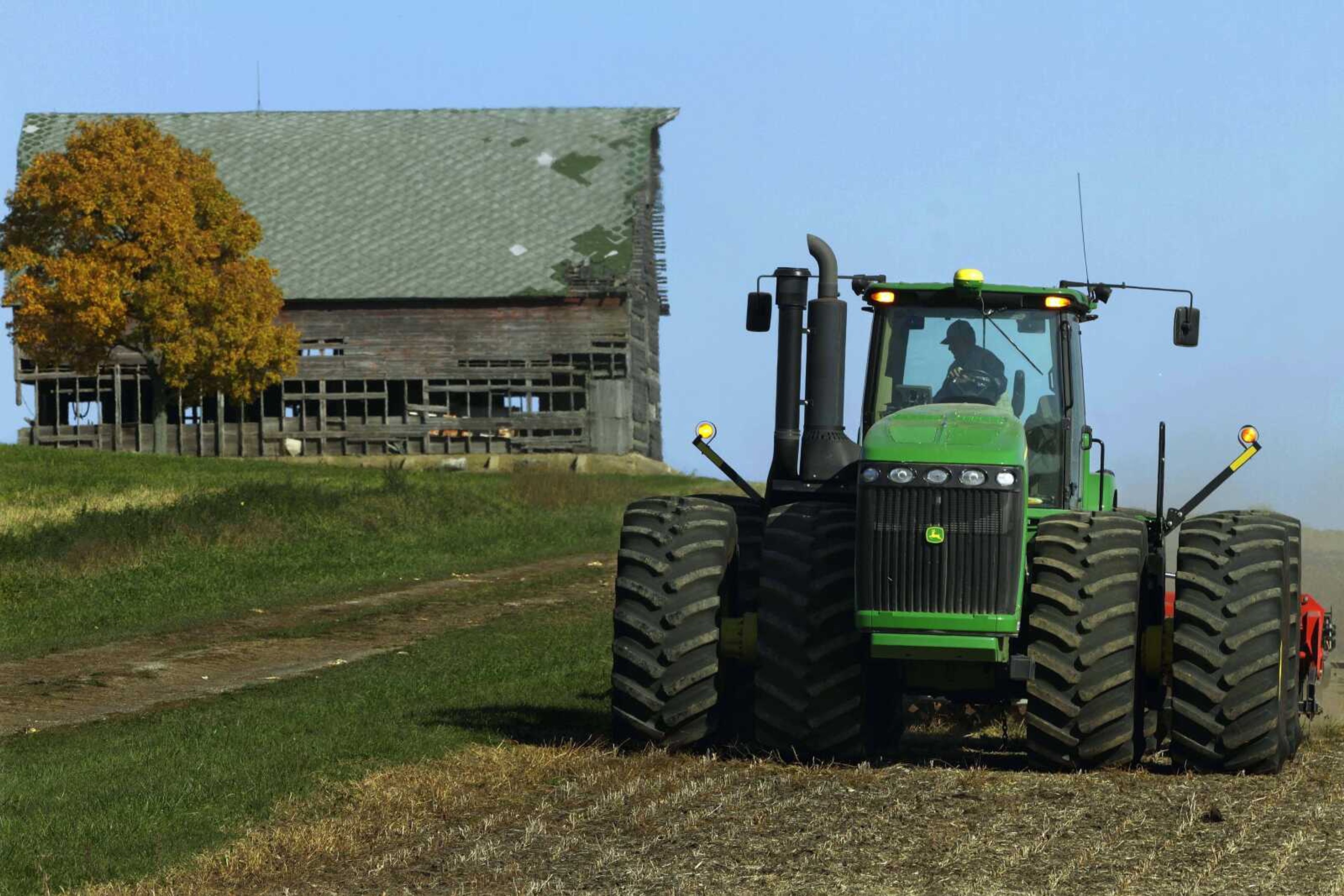Drought conditions ease in key Midwest farm states
ST. LOUIS (AP) -- Recent storms helped ease the grip of the nation's worst drought in decades on several key Midwest farming states, raising hopes that the winter wheat crop will fare better than this year's corn, which is in the final stages of being harvested...
ST. LOUIS (AP) -- Recent storms helped ease the grip of the nation's worst drought in decades on several key Midwest farming states, raising hopes that the winter wheat crop will fare better than this year's corn, which is in the final stages of being harvested.
The U.S. Drought Monitor's weekly update released Thursday shows that 62.4 percent the lower 48 states remained mired in some form of drought during the seven-day period that ended Tuesday. That's down more than a percentage point from the previous week.
The benefit of recent downpours was more pronounced in states such as Iowa, the nation's biggest corn producer. Thursday's update showed that 63.9 percent of Iowa still is in extreme or exceptional drought -- the worst two classifications -- in what marked an improvement of nearly 12 percentage points from a week earlier.
Those two categories fell in Kansas from 95.7 percent last week to 77.8 percent now, while in neighboring Missouri those numbers slid from 15.1 percent last week to 11.8 percent. Nebraska's showing in those classifications dropped 2.5 percentage points to 95.31 percent, and Illinois remained relatively unchanged, at 7.16 percent. In Southeast Missouri, most of the area has moved into the "moderate" or "severe" drought categories, two of the least intense drought categories.
The U.S. Department of Agriculture reported Monday that 79 percent of the nation's corn crop has been harvested, which is more than double the average amount harvested by this time over the previous five years. That speed was especially evident in Iowa and Illinois, where 87 percent of the crop has been brought in from the fields. In Missouri 95 percent of the corn crop had been brought out of the field, 14 days ahead of last year and 48 days ahead of normal.
Seventy-one percent of the U.S. soybean fields have been reaped, up from the previous half-decade average of 58 percent, the USDA said. In Missouri 36 percent had been harvest, five days behind last year's harvest rate.
The slight weakening of the drought in the nation's Corn Belt followed a couple of recent storms that blew through the Great Plains, leaving behind as much as 4.5 inches of rainfall in some areas, the National Oceanic and Atmospheric Administration's Matthew Rosencrans wrote in Thursday's update. It was released by the National Drought Mitigation Center at the University of Nebraska in Lincoln.
More storms are expected in coming days, with the National Weather Service forecasting "a fairly wet pattern" across the northern tier of the continental U.S. and across the Midwest, Rosencrans wrote.
That's welcomed news to growers of winter wheat and corn and soybean farmers, all hoping that significant moisture this autumn and through the winter recharges what had been bone-dry soil in time for next spring's planting season.
The USDA said about 71 percent of the winter wheat crop is now in the ground -- a pace consistent with the five-year average -- even though only 36 percent of those plantings have emerged, off 8 percentage points from the norm over the previous half decade.
Connect with the Southeast Missourian Newsroom:
For corrections to this story or other insights for the editor, click here. To submit a letter to the editor, click here. To learn about the Southeast Missourian’s AI Policy, click here.









